$250.00 – $1,800.00
The Tak Mountain Cube Strain
The Tak Mountain Cube strain was collected from an altitude of over 1000 feet in the Taksin Maharat National Forest Park in Tak, Thailand. This strain loves manure and can produce some impressive yields.
Buy Tak Mountain Cubes Online | Tak Mountain Cubes for sale.
Buy Tak Mountain Cubes magic mushrooms Online. Tak Mountain Cube is a strain of Psilocybe cubensis that was discovered by the legendary mycologist John Allen during his travels through Southeast Asia in the 1990s. It’s a Thai magic mushroom strain of average potency that’s slower to colonize but highly resistant to contamination.
This is an easy strain for beginners to cultivate, but a bit more (not much) patience is required throughout the process. The mushrooms themselves are medium to large — with some specimens reportedly reaching weights of over 90 grams.
This intriguing magic mushroom has all the traits of a typical robust Southeast Asian strain. If you’re looking for a strain that’s easy to grow and capable of producing large yields over several healthy, dense flushes, check this out.
I’ll also be answering some frequently asked questions about Psilocybe cubensis strains from Thailand and the rest of Southeast Asia.
Tak Mountain Cube Specs:
| Potency | Average |
| Cultivation | Beginner |
| Species | Psilocybe cubensis |
| Substrate Recommendation | Pasteurized Manure, BRF (Brown Rice Flour) |
| Sold By | driedmagicmushroomspores.com |
History of The Tak Mountain Cube Strain | Buy Tak Mountain Cubes magic mushrooms Online.
The first Tak Mountain Cube mushroom was discovered by John “Mushroom” Allen during his travels through Southeast Asia in the 1990s. The sample was collected from a patch of what Allen believed to be water buffalo dung at an elevation of 1000 feet (300 meters) in the Taksin Maharat National Forest Park in Tak, Thailand.
Allen believes that the strain was introduced from elsewhere in Thailand through spores present in the water buffalo manure the workers spread around the National Forest Park. Buy Tak Mountain Cubes magic mushrooms Online.
Once John Allen brought the Tak Mountain Cube spore samples back to the West, he sent them over to his friends in the Netherlands. These Dutch cultivators propagated the spores and created the stabilized strain we know today. Surprisingly, this strain is difficult to get hold of in Europe, even though it was developed there…
Tak Mountain Cube Potency & Psilocybin Content
This strain is yet to be tested in the Psilocybin Cup, so we don’t know what the exact psilocybin and psilocin percentages are yet. However, from user reports and experiences, we have rated the Tak Mountain Cube strain as having average potency — this puts the strain in the same category as the popular Golden Teacher strain.
Tak Mountain Cube mushrooms have “average potency” — producing total tryptamine levels (psilocybin, psilocin, baeocystin, and other tryptamine compounds) somewhere in the region of 0.50% to 0.90%. Buy Tak Mountain Cubes magic mushrooms Online.
Where to Buy Tak Mountain Cube Spores
Tak Mountain Cube Spores can be purchased from most major spore vendors across the globe. However, finding the strain for sale at a vendor based in Europe can be difficult. Those wishing to purchase Tak Mountain Cube Spores samples in Europe and the United Kingdom may have to order spore samples from overseas.
If you are in United State, Canada, Australia and Europe then To buy Matias Romero Magic mushroom online, visit our shop.
We sell magic mushrooms as well as medicinal and gourmet mushroom spores.
This company ships worldwide and offer an enticing insurance policy for orders that are blocked at the border.
If your order is stopped for any reason, We will ship another identical order free of charge.
Tak Mountain Cube Variations & Genetic Relatives
The Tak Mountain Cube strain was first collected from Thailand. This country is rich with mushrooms of all varieties and is home to dozens of interesting Psilocybe cubensis strains.
Related: Magic Mushroom Strain Guide (100+ Strains Explained)
John Allen collected several strains from Southeast Asia, and many of the Thai varieties share similarities. Tak Mountain Cube mushrooms are incredibly similar to many of the other cubes Allen collected throughout his travels. These Thai strains are likely close relatives — many are difficult to tell apart from one another.
Here are some of Tak Mountain Cube’s Thai relatives:
1. The Lipa Yai Strain
The Lipa Yai strain was discovered on the island of Koh Samui, close to where Allen found the famous “Koh Samui” strain. This strain produces tall, slender fruiting bodies. It has excellent disease resistance, colonizes quickly, and can thrive in an unoptimized environment.
This strain is a great choice for the beginner to mushroom cultivation. It’s slightly fast-growing than the Tak Mountain Cube strain but may not produce as prolific flushes.
The Lipa Yai strain has average potency — producing somewhere in the region of 0.50% to 0.90% total tryptamines. The effects are comparable to the Koh Samui strain, which produces average psilocybin levels of 0.66%.
2. The Koh Samui Strain
The Koh Samui strain is one of the most popular Thai strains on the market. It has a high resistance to contamination and is capable of producing several dense flushes before succumbing to contamination — making it the perfect strain for beginners.
This strain is famed for producing “fatasses” — short mushrooms with fat, wide stems. It was first collected by John Allen during the 1990s. The first sample was discovered growing near the town of Hua Thanon on the island of Koh Samui — hence the name.
Through testing, we’ve found that Koh Samui mushrooms produce somewhere in the range of 0.69% and 0.86% total tryptamines — around 0.70% psilocybin.
3. The Pink Buffalo Strain
The Pink Buffalo strain gets its name from where it was first found growing — in a patch of manure from a literal pink buffalo. As well as favoring dung, the Pink Buffalo strain shares several similarities with the Tak Mountain Cube strain.
The mushrooms look similar to Tak Mountain Cube shrooms but have slightly higher potency — producing 0.90% and 1.80% total tryptamines.
This strain is also a little slower to colonize, but it’s contamination resistance and adaptability to an unoptimized environment make it an easy strain to grow, even for beginners.
4. The Ban Thurian Strain
The Ban Thurian strain was first collected from Koh Samui by John Allen in the 90s. This is a well-rounded strain that’s moderate in all categories — contamination resistance, potency, colonization speed, and mushroom size.
These shrooms look similar to Tak Mountain Cubes and are just as easy to cultivate.
5. The Ban Hua Thanon Strain
The Ban Hua Thanon strain was discovered by John Allen on the island of Koh Samui, close to the town of Ban Hua Thanon. The mushrooms share potency and appearance with the Tak Mountain Cube strain. However, the Ban Hua Thanon strain colonizes quickly and produces slightly smaller mushrooms.
This strain is noted for being resilient to high temperatures and resistant to contamination. It’s a great strain for beginners, but spores can be difficult to come by in some regions.
6. The T3 Strain
The T3 strain is unusual in that it produces three unique growth characteristics. T3 mushrooms seem to change from flush to flush, with some that look short and fat, some tall and thin, and some like a “typical cube.”
Believed to be a genetic offshoot of Koh Samui, it shares the same resilience and is relatively easy to grow. However, it’s not the best option if you want to produce a large amount of mushrooms. It’s more of a strain for the connoisseur cultivator that wants to experiment with some unusual genetics.
How to Grow Tak Mountain Cube Mushrooms
Although the Tak Mountain Cube strain is slower to colonize than other Thai strains of Psilocybe cubensis, it’s resistant to contamination and can grow in an unoptimized environment. It’s incredibly easy to grow, even for the beginner with limited experience, but those that cultivate it must be patient during the incubation phase.
The Tak Mountain Cube strain can be cultivated in a similar manner to other edible, gourmet, and Psilocybe mushrooms.
One of the simplest methods to grow this strain is to utilize the PF-Tek cultivation method. This cultivation approach requires a few basic pieces of equipment that can be easily obtained from general stores. Regardless of your location, acquiring the necessary equipment for PF-Tek cultivation is affordable and straightforward.
Here’s a quick overview of the PF-Tek cultivation process:
- Preparing the Growing Medium — Initially, a substrate must be prepared to provide support for the mycelium, which will eventually yield the mushrooms. You can fill a selection of jars with your chosen substrate, such as rye grain or BRF (a mixture of brown rice flour and vermiculite). Tak Mountain Cubes do particularly well on BRF enriched with pasteurized livestock manure.
- Sterilizing the Jars — Once the jars are filled with substrate, they must undergo sterilization using a pressure cooker. Loosely sealing the jars, they should be placed in the pressure cooker for 30 minutes and allowed to cool inside for two to three hours before proceeding to the next step.
- Inoculating the Substrate — With the substrate-filled jars now prepared, it’s time to inoculate them with the Tak Mountain Cube strain spores. It’s crucial to maintain a sterile environment during this step. Using a sterile syringe filled with spores, inject 2 CCs of liquid into the substrate in each jar. Then, seal the jars with lids and cover them with aluminum foil before moving on.
- Incubation — Once inoculated, the jars are ready for incubation. Place them in a simple incubator at temperatures ranging from 20 to 28 ºC (68 to 82 ºF). After a couple of weeks, the substrate inside the jars should be entirely colonized with white mycelium, indicating readiness for fruiting.
- Fruiting the Mycelium Cakes — Carefully remove the mycelium cakes from the jars and transfer them to a fruiting chamber — this can be easily constructed using a plastic container and other basic materials. Maintain a temperature of 10 to 20 ºC (50 to 68 ºF) inside the chamber and ensure relatively high humidity using a mist spray bottle throughout the fruiting phase.
- Drying and Storage — To maximize the longevity of the mushrooms, it’s advisable to dry them upon harvesting. Air-dry them in a dimly lit area with proper ventilation until they become “cracker dry” and can snap audibly. Once dry, the mushrooms can be stored in mason jars with the addition of a silica gel pack, which will help ensure any remaining moisture is removed.
The guide above only provides a rough overview of the cultivation process for the Tak Mountain Cube mushrooms. If you are interested in learning how to cultivate P.cubensis mushrooms, we recommend exploring our comprehensive guide: How To Grow Magic Mushrooms: The Easy Way.
Does mushroom cultivation sound like a bit too much effort for you?
Don’t worry; there’s an easier option. Magic mushroom grow kits are the perfect option for beginners that don’t feel confident creating a sterile environment or perhaps don’t have the time or equipment to cultivate from spores.
These kits contain live mycelium that’s ready to fruit. Growing Psilocybe cubensis mushrooms with these kits are as easy as unwrapping them and waiting for the shrooms to sprout.
Other Easy-to-Grow Strains of Psilocybe cubensis
1. The Golden Teacher Strain
The Golden Teacher strain is the most common (alongside Penis Envy and the Koh Samui strain) on the market. This strain has been around since the 80s, and it’s a first choice among many new cultivators.
This is an extremely well-rounded strain. It’s quick to colonize, resistant to contamination, produces dense clusters of mushrooms, and carries average potency.
Testing on this strain across 11 different samples entered into the Psilocybin Cup suggests averages of 0.66% psilocybin, 0.05% psilocin, and 0.73% total tryptamine levels.
2. The Cambodian Strain
The Cambodian strain is famed for producing dense flushes. It’s highly resistant to unoptimized growing conditions and contamination, making it a great option for the beginner that lacks cultivation experience.
John Allen collected this strain back in the 1990s from a patch of manure close to the temple of Angkor Wat in Cambodia. Although easy to grow, this strain is relatively weak in terms of potency — producing around 0.57% total tryptamine (0.45% psilocybin).
3. The Escondido Strain
The Escondido strain is relatively new to the market. It was collected from the Puerto Escondido region of southern Mexico — hence the name.
This strain is resistant to climatic change and contamination. It’s famed for its prolific flushes and fast colonization speeds, making it the perfect beginner strain for someone that wants to cultivate something a little different.
This strain is pretty weak compared to some other easy-to-grow Psilocybe cubensis strains, but it’s capable of producing average potency levels (0.50% to 0.90% total tryptamines). That said, one sample entered into the Psilocybin Cup produced a meager 0.11% psilocybin level.
4. The PF Classic Strain
The PF Classic strain is an OG in the mushroom world. This strain was developed by Robert McPherson — the “PF” in the strain name stands for Psilocybe Fanaticus — McPherson’s online pseudonym. McPherson also created the prized cultivation technique “PF-Tek,” and this strain was developed for use with it.
This strain is resistant to contamination and can cope in an unoptimized growing environment, making it perfect for new cultivators. It’s also famed for its slow maturation times, which makes harvesting the mushrooms and collecting spores for microscopy or reproduction easy.
PF Classic isn’t particularly potent — producing an average total tryptamine level of around 0.67%.
5. The F+ Strain
The F+ strain — also known as Florida White, Florida Strain, or simply F-Strain — is incredibly easy to grow. It’s quick to colonize substrate, is resistant to contamination, and can grow in an unoptimized environment. However, the mushrooms are notoriously weak.
The only F+ sample tested so far in the Psilocybin Cup produced 0.37% total tryptamines — putting this strain in the “weak” category. This could be why the strain isn’t particularly popular among the mushroom community.
1. How Many Thai Strains of Psilocybe cubensis Are There?
It’s difficult to say how many distinct strains of Psilocybe cubensis have been discovered growing in Thailand. New strains are appearing all the time, and some are yet (or never) make it to market. However, there are at least 12 different Thai strains on the market at this time.
Here are the Thai strains we currently know about:
- The Allen Strain
- The Koh Samui Strain
- The Lipa Yai Strain
- The Ban Thurian Strain
- The Ban Hua Thanon Strain
- The Ban Phang Ka Strain
- The Ban Lamai Strain
- The Ban Nathon Strain
- The T3 Strain
- The Pink Buffalo Strain
- The Thai cubensis strain
- The Tak Mountain Cube Strain
2. What’s The Easiest Strain of Psilocybe cubensis to Cultivate?
Out of the hundreds of psychedelic mushroom species, Psilocybe cubensis is the easiest to cultivate in an artificial environment. However, some strains are easier than others to grow.
The Tak Mountain Cube strain and the other Thai and Southeast Asian strains are notoriously easy to cultivate, but the most popular easy-to-grow strain is definitely “Golden Teacher.”
The Golden Teacher strain has been circulating the market for decades. Its fast colonization speed, resistance to contamination, ability to thrive in an unoptimized environment, and prolific fruiting have made it a popular choice among beginner growers.
3. What’s The Strongest Strain of Psilocybe cubensis?
The strongest strain of Psilocybe cubensis is, without a doubt, the Penis Envy strain. There’s a famous saying that goes, “A cube is a cube, except for Penis Envy” — this is in relation to its potency.
Penis Envy is capable of producing mushrooms with up to four times the amount of psilocybin as the average strain of P.cubensis.
One sample entered into the Oakland Hyphae Psilocybin cup produced a staggering 2.90% total tryptamine level — 1.65% psilocybin and 1.26% psilocin.
Another strain that holds the title of “strongest cube” is the Tidal Wave strain. In the 2021 Spring edition of the Psilocybin Cup, Tidal Wave produced a total tryptamine level of 3.82% (2.26% psilocybin and 1.56% psilocin). This is no surprise — it also features genetics from the legendary Penis Envy strain.
4. What Countries Do P. cubensis Mushrooms Naturally Grow In?
Thailand isn’t the only country to boast a hefty population of Psilocybe cubensis mushrooms. This species is the most prevalent across the globe, and it can be found in over 30 countries across six of the seven continents of Earth.
These are the countries where Psilocybe cubensis mushrooms grow:
- Argentina
- Australia
- Barbados
- Belize
- Bolivia
- Brazil
- Cambodia
- Colombia
- Costa Rica
- Cuba
- The Dominican Republic
- Fiji
- French Guiana
- Guadalupe
- Guatemala
- Hawaii
- India
- Jamaica
- Malaysia
- Martinique
- Mexico
- Nepal
- New Zealand
- Paraguay
- Peru
- The United States
- Tasmania
- Thailand
- Trinidad
- Uruguay
- Vietnam
| Quantity | Ounce, 1/4 Pound, 1/2 Pound, Pound |
|---|
Be the first to review “Buy Tak Mountain Cubes magic mushrooms Online.” Cancel reply
Related products
Mushroom
Mushroom
Mushroom
Mushroom
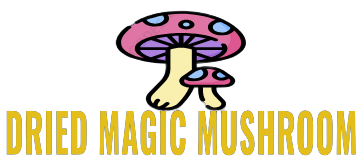
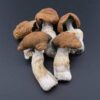
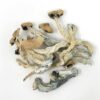

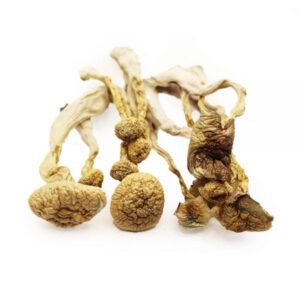
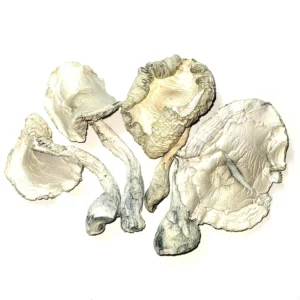
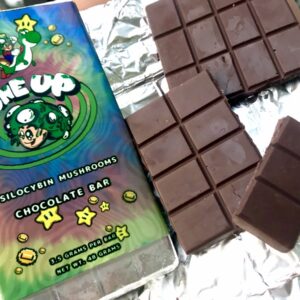


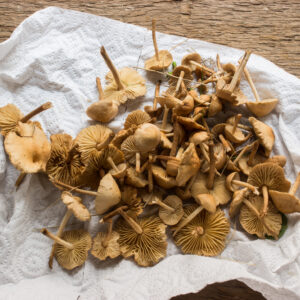
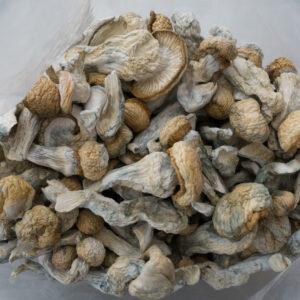
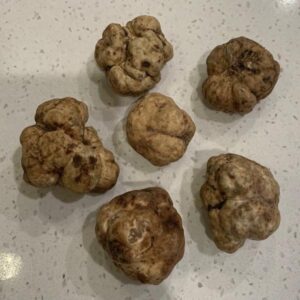

Reviews
There are no reviews yet.